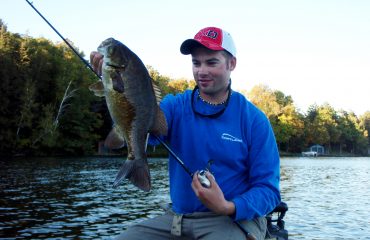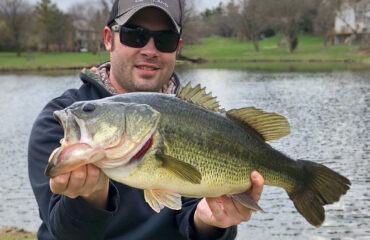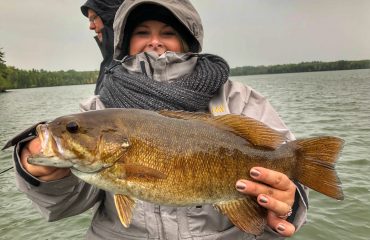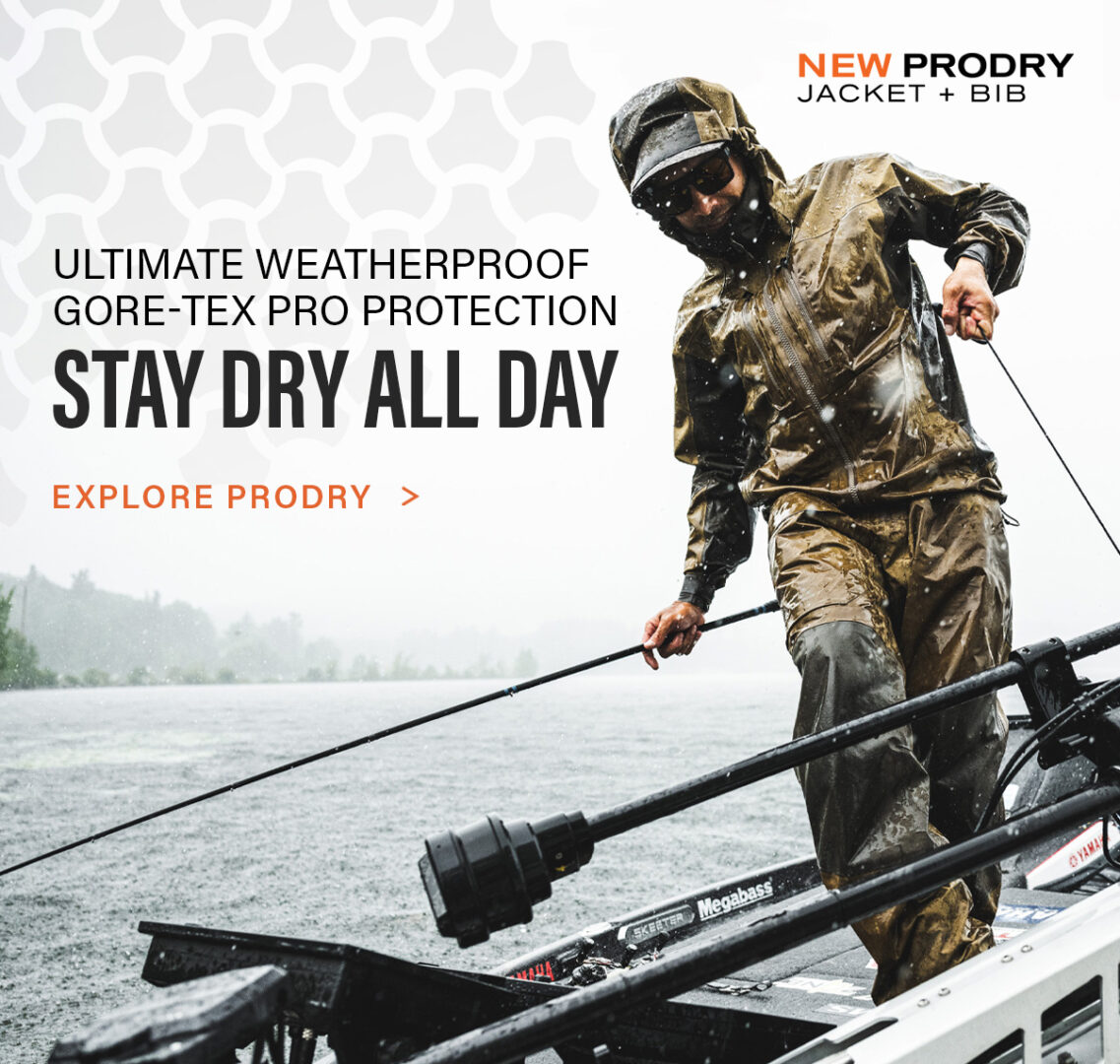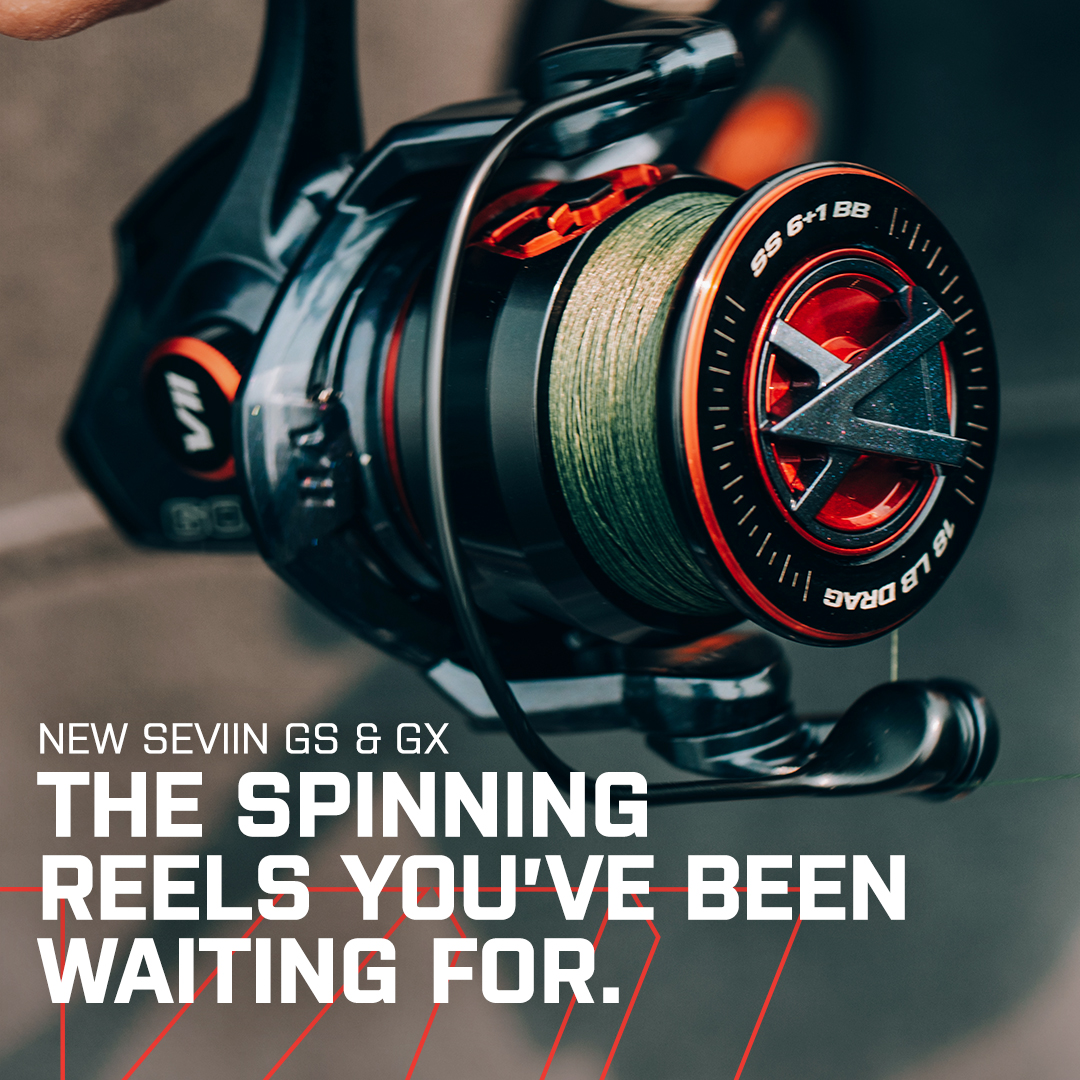Insights and Ideas for More Spring Smallmouth
Spring pre-spawn smallmouth patterns are solidified across so many fisheries throughout the Midwest and Great Lakes. Wherever in these regions you’re destined to fish, the smallmouth bass populations of natural lakes, rivers, and reservoirs are guaranteed to be feeding heavily at this time.
For many of us, some of the best smallmouth fishing of the season takes place as waters are warming in spring. Where fishing seasons are open to catch and release-only fishing, your pursuits will be excellent if you come prepared ahead of time.
The spring thaw, increase in sunlight, and the gradual warming of air and water temperatures draws smallmouths out from their winter slumber. Feeding is their first priority, followed by staging and setting up for the spawn as water temperatures warm into the upper 50’s. The first few weeks of May are a personal favorite time of year as traditional pre-spawn fishing techniques dominate. Prior to spawn, many serious smallmouth anglers covet the short period.
With good weather, fishing can be easy with their locations and patterns becoming predictable. However, these past few seasons, the months of April and May have been challenging and brutal, with the only real spring season windows occurring for short periods in between cold fronts. Coincidentally, the poorer the weather, the worse the fishing is.
There are no shortcuts to consistently catching quality bass, but there are certain strategies and methods you can apply to improve your success. Here are some new ideas brought to you by my boat and its guide customers.
Middays and Afternoons
Early mornings and evenings are the least productive fishing periods of spring. Midday and afternoon fishing is paramount to the success of springtime anglers. Most feeding windows will take place during these hours. Waiting for them to open and fish movements to happen resulting from a weather change, peak sunlight, or a water temperature increase can lead to an amazing outing.
During spring smallmouth trips, we prioritize midday and afternoon fishing, often camping on a single water body. This will be the worst time of day to be sitting in a car, traveling. In spring, feeding windows can occur multiple times, but will be short. While it’s difficult to predict good or bad fishing, not being on the water at this time of day is a mistake that will result in missing out on bites.
Majority of my good days of smallmouth fishing and our guide trips take place on sunny days. Sunlight stimulates smallmouth activity and drives their feeding patterns. Because they are visual feeders, smallmouths are most responsive in such conditions and daily time frames in April and May.
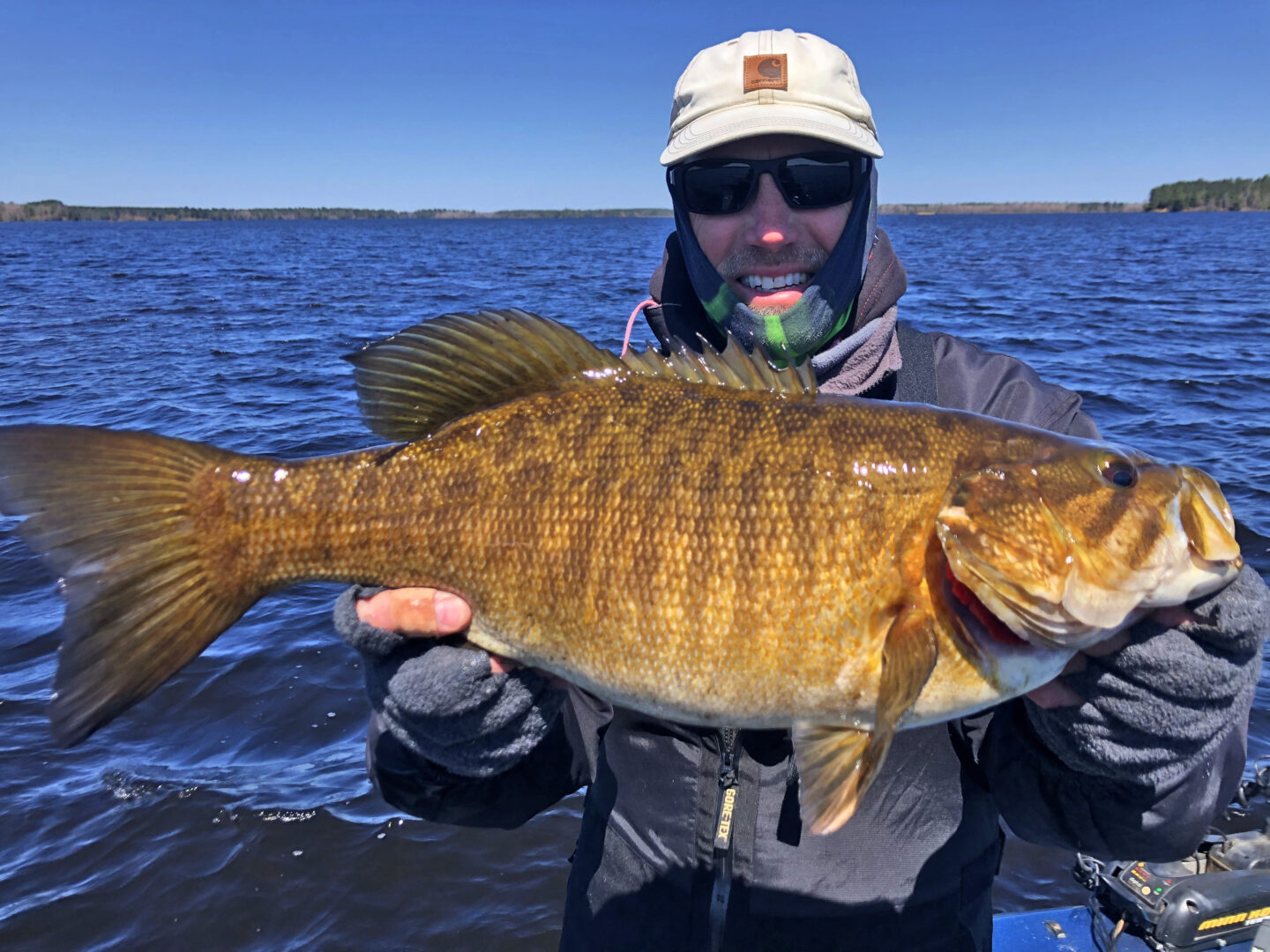
Longer is Better
Suspending jerkbaits are often the ticket to early spring success, and come in all shapes and sizes. It’s a lure choice that plays a huge role in many anglers winning strategies. Few other baits can catch early spring smallmouths better.
When water temperatures approach the mid 40’s, my boat often fishes with a variety of Rapala X-Raps and Shadow Raps, Dynamic Lures J-Specs, Strike King KVD Jerkbaits, Livingston Lures Jerkmasters, and no longer made Matzuo Phantom Minnows. Each is popular choices.
Retrieve speed and presentation is paramount to jerkbaiting success. Most bass anglers are prone to fish suspending jerkbaits too quickly and aggressively, as these baits are excellent triggers for reactionary strikes. The colder the water, the slower the retrieve, is our mantra.
Under these circumstances which include cold fronts too, we tempt early spring smallmouth with long-lining and long pauses between 30 seconds to a minute. To my knowledge, this tactic has been pioneered by famous river guide, Mike Mladenik, and is now being employed by other guides and anglers across the country. It’s deadly when lake smallmouths are lethargic, finicky, or suspending offshore. The Shadow Rap Deep 11, and Livingston Jerkmaster are elite and most effective in my box for the long pause.
It can be so boring to pause the baits and wait for bites in between jerks, that some of my guests get bored. But the next then you know, a 4 pounder strikes.
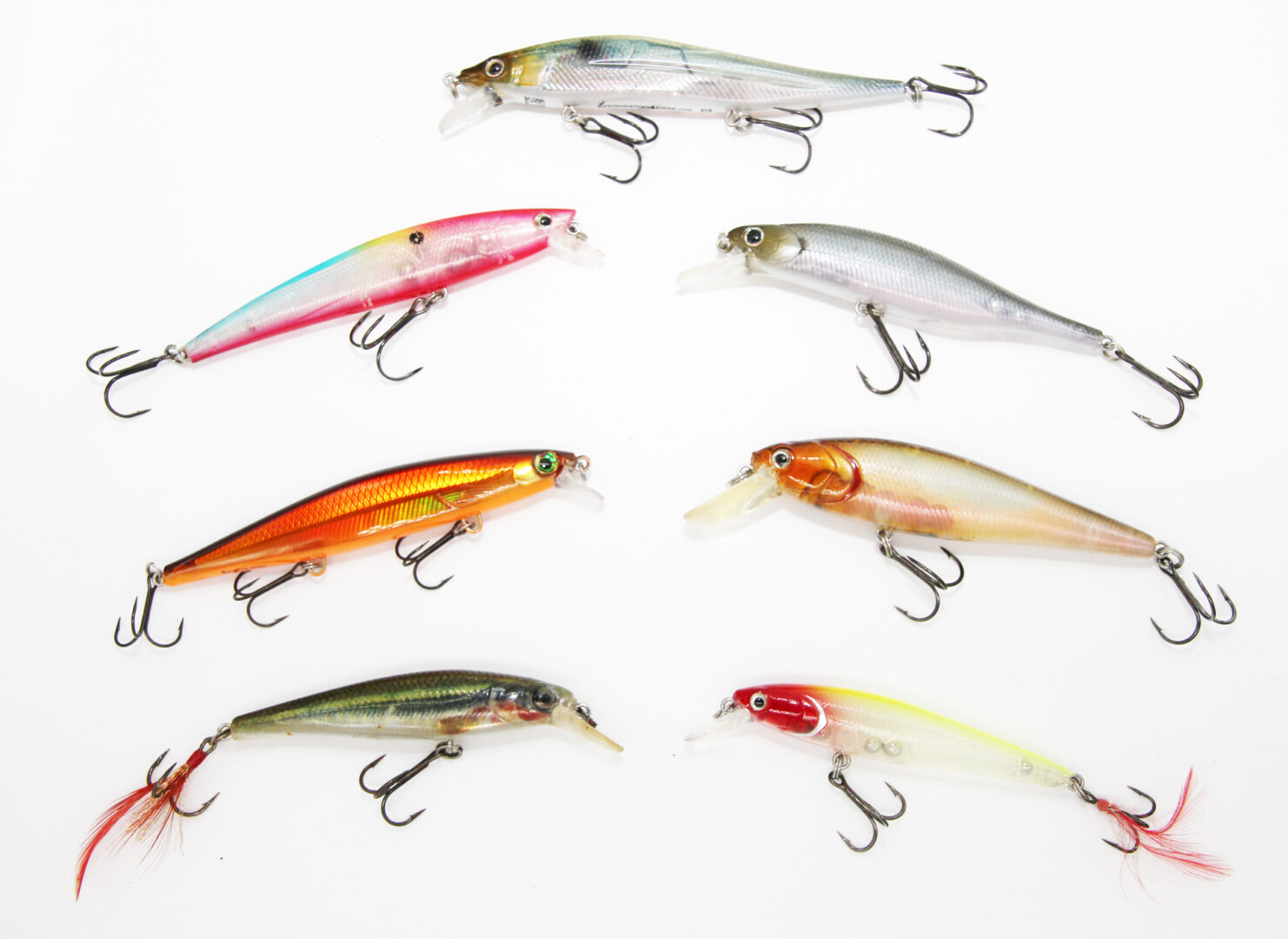
Finesse Plastics
Ten to twenty years ago, fishing pressure for bass on Wisconsin’s inland lakes was nonexistent compared to today. Back then, fish were less educated and hundreds of bass rigs weren’t traveling northbound on weekends, holidays, and during the spawning season.
At some point in the near future, smallmouths will eventually have enough with most prototypical spring lure choices and overhead fishing pressure. The supply of smallmouth populations in some lakes cannot meet the demand, and this is being observed across many fisheries. Increased fishing pressure is driving smallmouths away from aggressive lures, and potentially their traditional spring locations altogether.
Lures fade in effectiveness. We see it some days on guide trips when conditioned smallmouths reject suspending jerkbaits and other artificials. Nowadays, many anglers are turning to finesse plastics.
Most of my guide customers show up to fish with me with their favorite spinning rod rigged up with a Z-Man TRD, or some other brand’s bitty bite. For countering pressured fish, and seemingly to achieve more bites, anglers are putting down their favorite suspended jerkbaits, lipless crankbaits, and swimbaits in favor of more finesse applications. Hair jigs, swimming plastics, finesse tubes, ultra-light wacky worms, assortments of ned rigged plastics, and drop shot rigs are getting more and more looks from smallmouths. The feedback is good now, even with so many anglers fishing each of them nowadays, but it could be wise to try and find something new.
Undoubtedly fishing pressure is changing feeding habits and catch rates are down. My boat’s 20 inchers, and 50 fish trip days are becoming fewer as a result of increased fishing pressure. It’s more difficult nowadays to catch fish with traditional lures we’ve used in years past. Smallmouths are learning not to strike certain lures, and are becoming more cautious. Finesse plastics are catching more smallmouths during the pre-spawn season now than ever before.
Who knows what they’ll want next, once our fisheries become further conditioned.
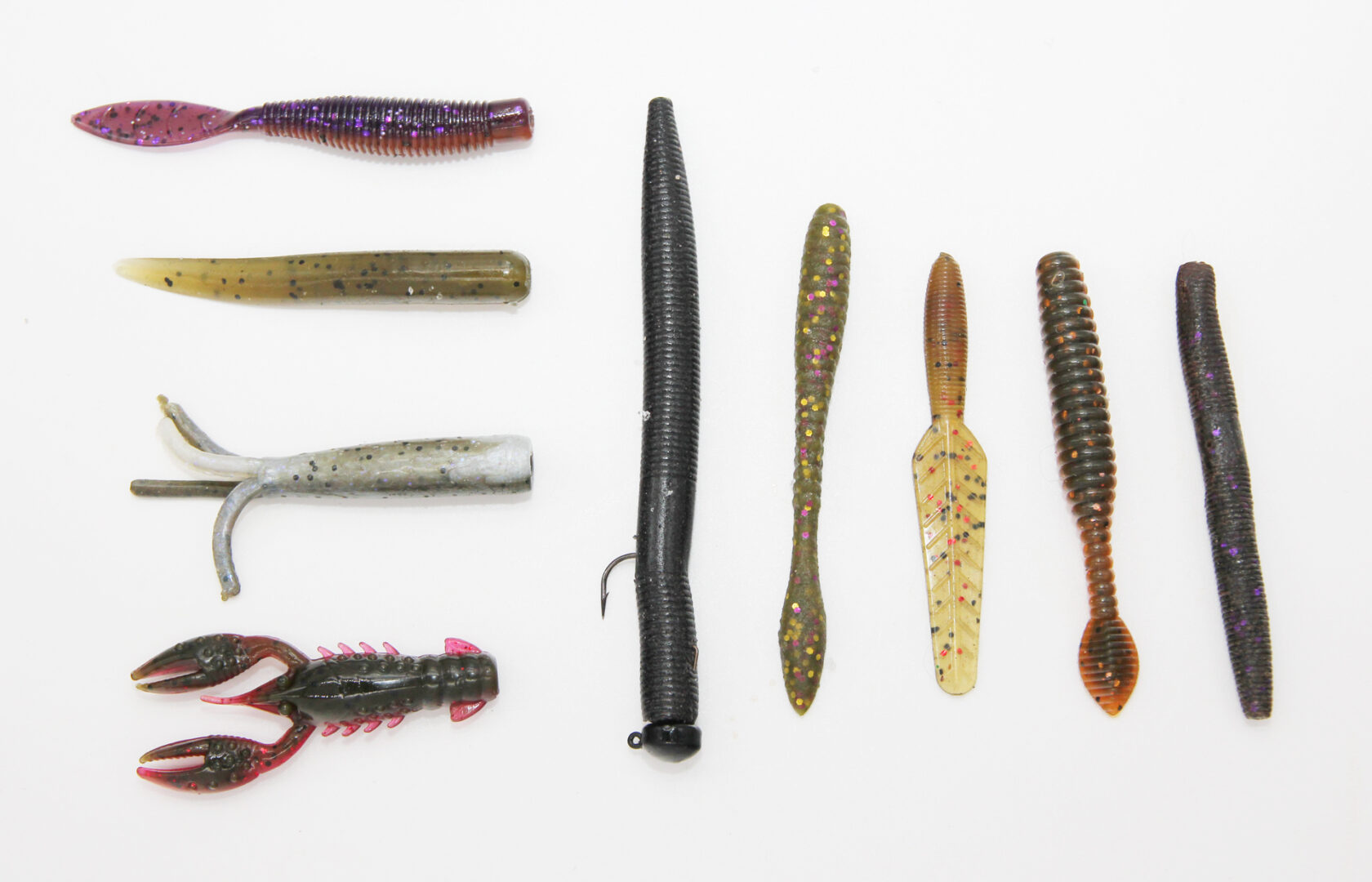
Dress for Success
Many suspending jerkbaits are manufactured and packaged without a dressed rear treble hook. Straight from the package, they catch fish but leave lots of them on the table. You can entice additional strikes by modifying those baits and attaching aftermarket teaser tails. I do this often with the Dynamic Lures J-Specs and Lucky Craft Pointers.
The best smallmouth anglers know how the eye-catching enhancement of feathered hooks can tempt bass that might otherwise lose interest at the last moment. We observe this often with Rapala X-Raps. Their inclusion of a dressed rear hook is a major reason behind this bait’s success. It seals the deal.
Dressed trebles are beneficial on clear water. On these fisheries, smallmouths have exceptional vision and are able to track baits at long distance.
Dressed trebles pulsate, flare out, and breathe through the water on every jerk and pause creating a hinging effect. The rear treble swings side to side, creating further attention.
VMC Rapala and Berkley each commercially produce good feathered treble hooks. Some of the best creations, however, are done by fly tiers, many of whom understand the physics and hydrodynamics behind their materials and of their creations. Fly tiers can create with specific hook brands and styles, and often work with higher quality feathers, hair, tinsel and flashabou materials.
For your jerkbait enhancements, make sure the feathers are evenly spread and don’t dwarf the hook, and that the hook size matches the bait’s originals. Too much of both, and it’ll reduce the bait’s cutting and darting action.
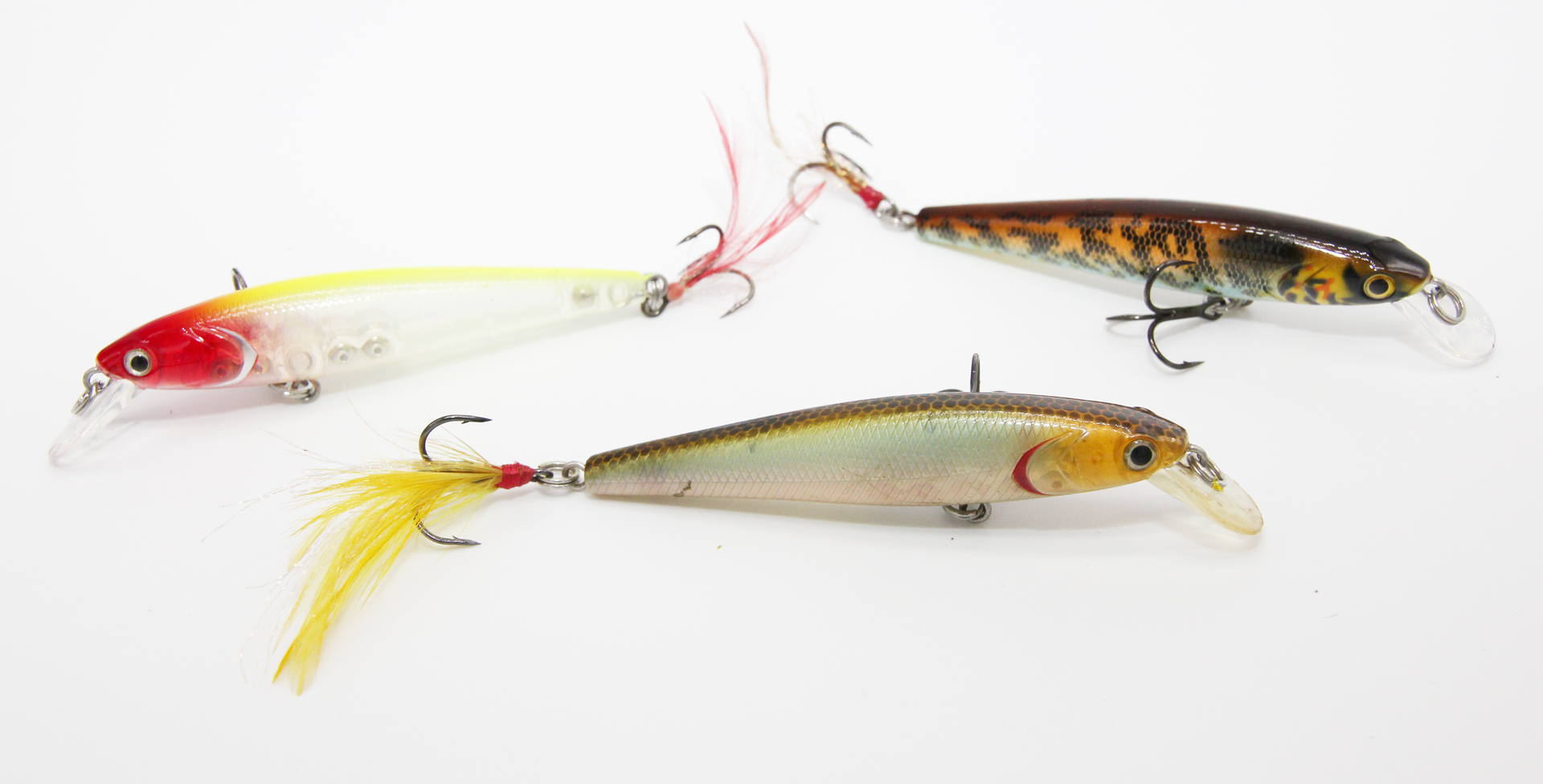
Rivers and Flowages
I preach fishing waters that warm fastest. This is no exception in early spring. To catch potentially the most active fish, and to tap into premier smallmouth fisheries whose populations are further and deeper established into the spawning season, I always fish and guide on the larger river systems and their flowages to begin the season.
Compared to inland lakes, river and flowage water temperatures can be up to 10 degrees warmer. While smallmouth in large lakes could still be wintering and dealing with ice-out conditions, smallmouth from these fisheries are likely to be migrating into staging locations and feeding heavily. Year after year this pattern is my most consistent and reliable for early spring trips.
On flowages, smallmouths track along main river channels and old lake basins to aid in their annual spawning migrations. The same adult fish revisit the same spawning sites each season. Our fishing will gravitate to expansive shoreline and island flats that contain a good amount of scattered rock and boulder. On these locations, Smallmouths often pile up along their deepest edges, and will invade as waters warm further. These locations are further appealing if within sight of the deep channels. Most Wisconsin low-land flowages are sandy and shallow. Hard bottom substrates are very limited. Any rocky shoreline and littoral zone will be a fish magnet, along small coves and shoreline pockets with wood.
On river systems such as the Flambeau, Menominee, and Wisconsin River systems, water temperature means everything. 90% of the fish will be concentrated in 10% of the river or less, assuming if water temperatures are colder than 52 degrees. This makes fishing an entire several mile stretch of river unproductive. Therefore it is important to know the locations and placements of large, deep slackwater pools that will serve as their staging sites. Access these pools by boat or wading. By the time they warm into the middle 50’s, smallmouths migrate further and deeper into the system where they will disperse before settling to spawning sites. Likely habitats in these moving-water environments are laydowns, boulders, rock fields, eddies and current breaks, underwater benthic zones (current breaks along bottom) located along river bottoms, creek mouths and inflows, and man-made rip-rap.
Rivers and flowages warm rapidly, have shallower depths, are generally nutrient-rich dark water environments, and are proliferated with inflows and outlets that continuously inject warmer water into the system. Their currents coupled with dark water clarity warm surface temperatures at a rapid rate. Quite often, the smallmouth’s biologic calendar on these waters is a few weeks ahead of schedule compared with most other lake types and waters in the region. This makes rivers and flowages unique in regards to targeting fish that are well advanced in spring patterns and more active and aggressive than anywhere else. By the time smallmouths begin spawning at these fisheries, turn your attention to deep, colder waters where the pre-spawn bite is only beginning to develop.
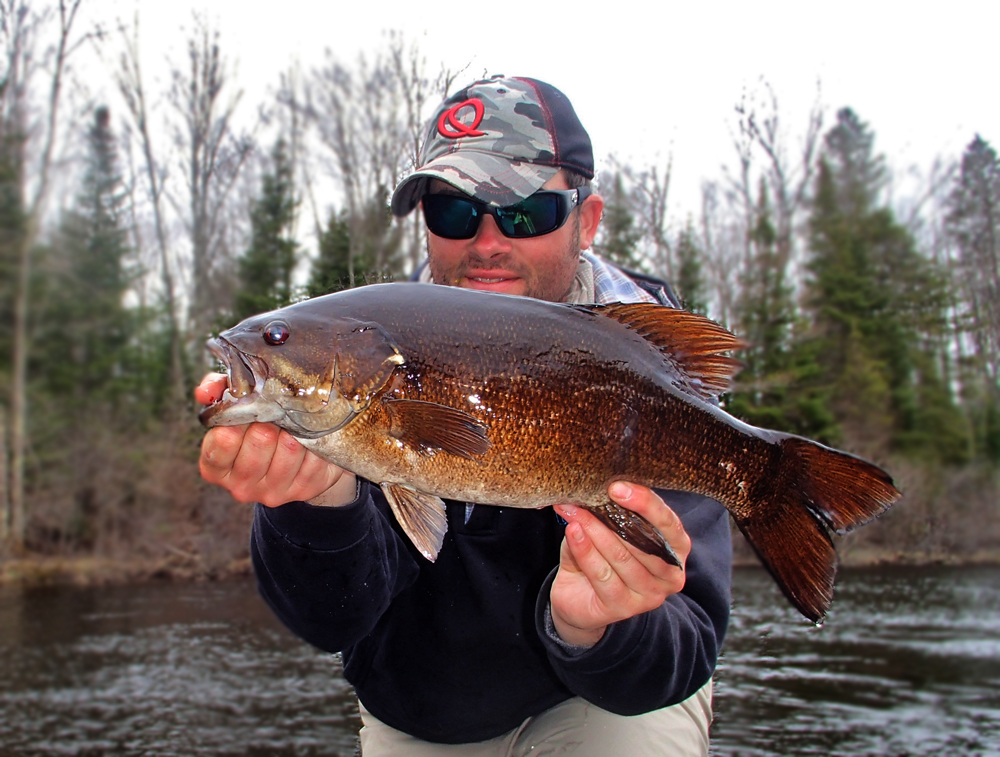
Know Your Subjects
The best fishermen will know their subjects. In smallmouth fishing, those of us who can readily find and fool fish, and best understand their behaviors and tendencies, will produce results.
Anglers are manipulators of their gear and watercraft. While these luxuries can help enhance fishing experiences, they will not make you a better angler, nor are they the foundations of successful fishing.
Today, many anglers are consumed by the evils of fishing – Prioritizing excessive and impractical gear and tackle with few applications, investing thousands of dollars on electronics they make little effort to learn, and buying boats that require second or third mortgages to help pay for. Most bass anglers are fixated on the wrong things and prioritizing the wrong subjects. These are all major shortcomings.
Growing up and before I knew what marketing was all about, I was consumed by each of these desires. Nowadays I fish with some of the best equipment provided to me, and that I can also afford to buy. But during my upbringing, what I did differently from most of today’s anglers whom I now observe and instruct, I studied my subjects more than my peers.
I’ve read every book and magazine I had access to, front to back, learning about the lives and behaviors of fish. As I learned more and more about my subjects, not only did my appreciation and knowledge for them grow, but my fishing skills improved immensely. Reading is invaluable, but time on the water is the real education and I have been really blessed to have lots of it.
Today, my home office has become a fishing library, with shelves of books and periodicals authored and published by the best teachers in the history of freshwater fishing. I credit much of my fishing upbringing to these legendary anglers. Today, I still turn to their advice and study from them whenever I feel I’m running into any personal and guiding shortfalls.
Knowledge is power.
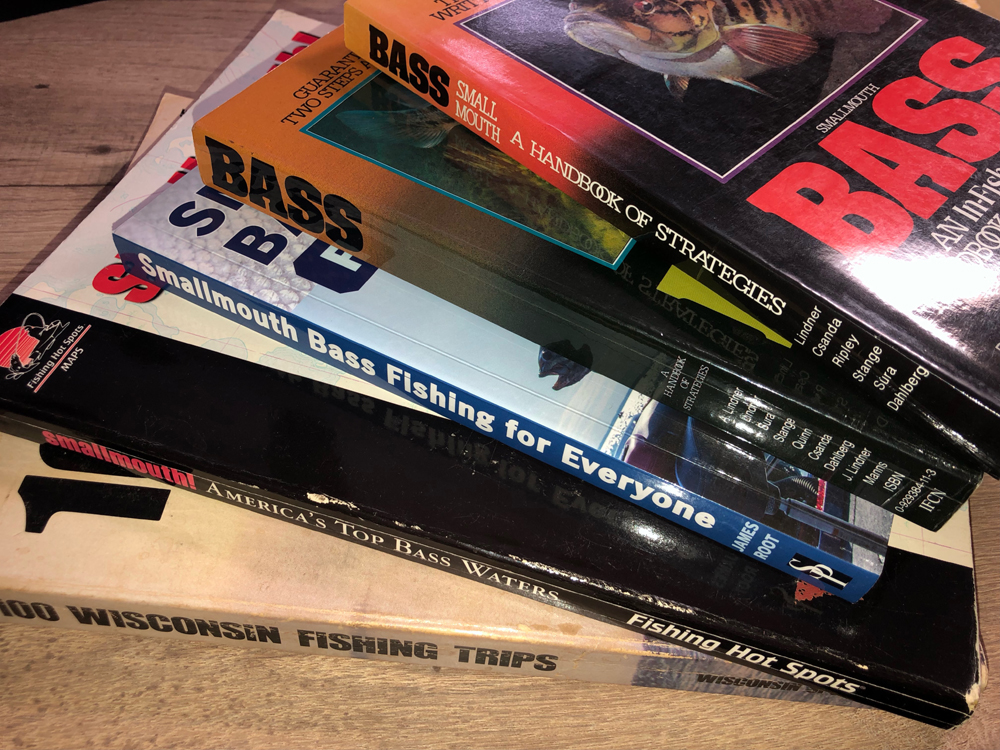
Each of the aforementioned lessons are utilized and applied to our spring season smallmouth fishing. Obviously, in addition to them, a lot of other factors and variables must correspond with and come into play. Consider them all, if you already haven’t, and you could have a better spring season than you’ve had in a long time.
Andrew Ragas splits time between the Chicago area and Wisconsin’s Northwoods. Based in Minocqua, WI, he specializes in trophy bass fishing and offers guided trips from May thru October. While big bass is the passion, he dabbles in multi-species as well. He may be visited online at www.northwoodsbass.com





